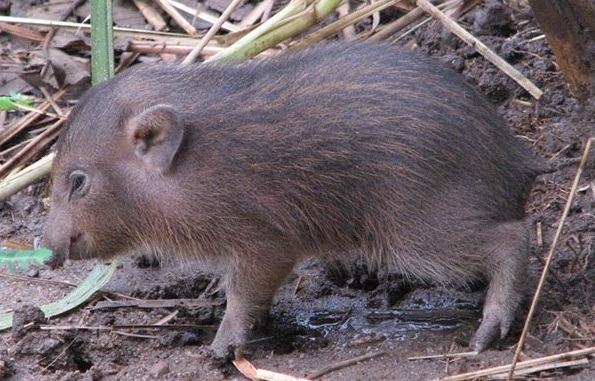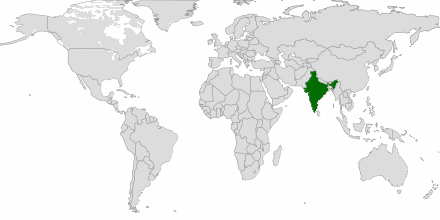Pygmy Hog is the most endangered wild pig species in the world, currently found only in India.
The Scientific Name : Porcula salvania
Where is it found?
Once found in the grass lands of whole southern Himalayan foot hill, Pygmy Hog has faced the wrath of human civilization and has been wiped out from most of it’s habitat. Currently the species is confined to the tall grass upland of Manas National Park in Assam with an estimated population of below 250. This species is very sensitive to any change in habitat and they are not made to adapt any changes in their Eco system. The density of their population if around 19 per square kilometer.
How does it live?
The Pygmy Hog is omnivores, diet consisting of wide assortment of tubers, plants, insects, and small mammals. It is generally active during the day light, spending six to eight hours per day foraging by rooting among soil and leaf litter. The family groups often travel in single file, with an adult at both the front and the rear. Throughout the year, it builds sleeping nest by piling dry grasses over dish-like depressions digging a trench into the ground. This is why its habitat is always grasslands. The Pygmy Hog can reach the age of 8 years in the wild, attending maturity at the age of 1-2 years. The reproduction cycle is strictly seasonal giving births before the monsoon during April-May with a gestation period of around 100 days. It is an extremely good swimmer and can run unbelievably fast in the dense grassland.
How does it look?
The Pygmy Hog is the smallest of the pig family, attaining hardly 1 foot(30 cm) in height and two feet in length (60-70 cm). It can weigh upto 8.5 kg. Male is bigger in size than the female. An adult pygmy hog has dark brown to black skin, overlaid by a coat of dark fur. The head has a crest of hair on the top of the head and the back of the neck. Younger hog is marked with vague reddish stripes which fades away with age.
What are the threats?
The political unrest in the Manas national park region has been a threat to the Pygmy Hogs.
Human encroachment, destruction of the grassland for agriculture has been constantly reducing its habitat.
This little poor species has been struggling to fight with the domesticated animals encroached human population.
Conservation Efforts
The conservation of the Pygmy Hog is very critical because it is the last surviving species of its genus. Unfortunately there is very less public awareness and support for this smallest pig in the world. The only conservation program for the Pygmy Hog was started in 1995. Named as the Pygmy Hog Conservation Program (PHCP), it was initiated by scientist Goutam Narayan with the help of the government, the Durrell Wildlife Conservation Trust (DWCT) and IUCN Wild Pig Specialist Group chair William Oliver. The PHCP started a captive breeding programme in Basistha, Guwahati, with the goal of reintroducing captive bred hogs back in the wild in 1996. The captive breeding was successful and after 12 years, the project released 16 hogs into the another sanctuary of the same region, Sonai Rupai Wildlife Sanctuary. The program has been able to release around 15 Pygmy Hog into the wild every year, creating a population base of around 50 Pygmy Hogs in the sanctuary. Due to the lack of any public interest and awareness, the program faces challenges for the resources, but the survival of PHCP is very critical for the survival of the little Pygmy Hogs.
A BBC Documentary Clip on Pygmy Hogs




Recent Comments